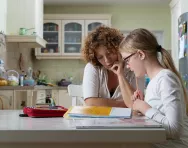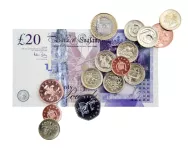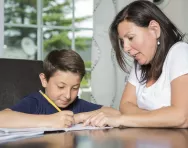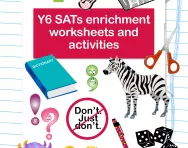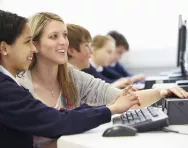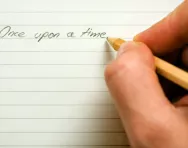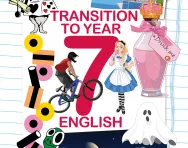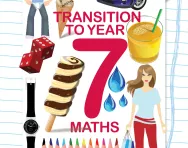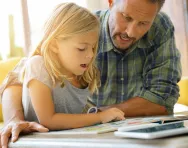Important update from TheSchoolRun
For the past 13 years, TheSchoolRun has been run by a small team of mums working from home, dedicated to providing quality educational resources to primary school parents. Unfortunately, rising supplier costs and falling revenue have made it impossible for us to continue operating, and we’ve had to make the difficult decision to close. The good news: We’ve arranged for another educational provider to take over many of our resources. These will be hosted on a new portal, where the content will be updated and expanded to support your child’s learning.
What this means for subscribers:
- Your subscription is still active, and for now, you can keep using the website as normal — just log in with your usual details to access all our articles and resources*.
- In a few months, all resources will move to the new portal. You’ll continue to have access there until your subscription ends. We’ll send you full details nearer the time.
- As a thank you for your support, we’ll also be sending you 16 primary school eBooks (worth £108.84) to download and keep.
A few changes to be aware of:
- The Learning Journey weekly email has ended, but your child’s plan will still be updated on your dashboard each Monday. Just log in to see the recommended worksheets.
- The 11+ weekly emails have now ended. We sent you all the remaining emails in the series at the end of March — please check your inbox (and spam folder) if you haven’t seen them. You can also follow the full programme here: 11+ Learning Journey.
If you have any questions, please contact us at [email protected]. Thank you for being part of our journey it’s been a privilege to support your family’s learning.
*If you need to reset your password, it will still work as usual. Please check your spam folder if the reset email doesn’t appear in your inbox.
Year 6 maths and English key topics for home education

Home education and learning can offer a unique opportunity to introduce Y6ers to the study skills, research skills and intellectual habits they'll need at secondary school – organising their work load, taking notes, revising and managing their workload independently will become more and more important as they start Year 7.
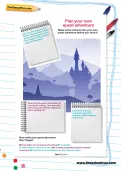
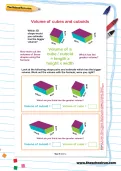
Start the Year 6 Learning Programme!
- Weekly maths, science & English worksheets direct to your inbox
- Follows the National Curriculum
- Keeps your child's learning on track
Here we look at seven key areas covered in Year 6, and some strategies for how you can teach them. For a more extensive list of what's taught in Year 6 maths, Year 6 English and Year 6 science, look through our parents' guides.
Year 6 English key area: grammar
Grammar learning in Y6 includes the active and passive voice, subjunctive verbs, identifying the subject and object in a sentence and understanding clauses (including relative clauses and embedded clauses).
While you might not be convinced about the importance of learning English grammar in primary school, it will stand your child in good stead when they start learning a foreign language in secondary school. An understanding of grammar can also make it easier to analyse texts – again, very useful when they come to write English Language essays in secondary school!
Grammar home-ed strategy:
There are loads of great grammar resources on TheSchoolRun, as well as some excellent grammar and punctuation apps for kids.
Year 6 English key area: using apostrophes for plural possessive nouns
Nail this in Year 6 and your child's writing will be better than most of their Year 7 classmates' work!
Apostrophes are the trickiest punctuation marks to master, as there are several rules and exceptions to remember.
When it comes to using apostrophes for plural and possessive nouns, the rule is:
- If it’s a plural posessive the apostrophe comes after the s (for example, the customers’ soup is the soup of more than one customer)
- If it’s a singular possessive, the apostrophe comes before the s (the soup of one customer is the customer’s soup).
- The exception is when the noun itself is a plural, for example: children’s / people’s / everyone’s
Using apostrophes for plural possessive nouns strategy:
Apostrophes are tricky, for adults as well as children! Challenge your child to find examples of apostrophes used incorrectly on social media, in publications and even on packaging (it's not that difficult, sadly), but remember to supervise them if they're going to be looking online.
Once they've learned the rule, it becomes second nature (and they will enjoy being grammar pedants for the rest of their lives!). I’d suggest having one or two focused sessions on this, then revisiting the topic when they're editing and proofreading their writing.
Year 6 English key area: recommending and sharing books
Encouraging children to recommend books to other readers, and giving reasons for their preferences, is a recurring theme in later Key Stage 2 – and never has there been a better time for book recommendations!
Help your child progress from saying they enjoyed a book, to explaining:
- What they liked about the author’s style
- Who the book would be most suited to
- What genre the book falls into
- How the book is formatted (for example, are the chapters short or long? Is the book divided into sections? If it's non-fiction, how is the information organised?)
- The use of language and how it creates atmosphere
Reviewing books (in writing) is a brilliant activity for young readers, and book review websites like Toppsta offer kids the opportunity to have their book review published online.
Recommending and sharing books home-ed strategy:
Working with other parents in your child's class or friendship group, set up a virtual book group. The children can share recommendations over a messaging group, or via video conference calls.
If you're looking for book recommendations for every age group and interest, TheSchoolRun has hundreds of great book suggestions.
Year 6 maths key area: factors and multiples
In Year 6, children learn to describe what factors and multiples are, and should be able to give factors and multiples of given numbers.
A multiple is a number that can be divided by another number a certain number of times without a remainder.
A factor is one of two or more numbers that divides a given number without a remainder.
So, 3 x 4 = 12
- 3 and 4 are factors of 12
- 12 is a multiple of 3 and 4
Factors and multiples home-ed strategy:
There are lots of factors and multiples practice opportunities on TheSchoolRun.
Offline, try this quick DIY factors and multiples game: print off a number square. The first player chooses a positive even number smaller than 50 and crosses it out. The second player chooses a number to cross out. The number must be a factor or multiple of the first number. Players continue to take it in turns to cross out numbers, at each stage choosing a number that is a factor or multiple of the number just crossed out by the other player.
Year 6 maths key area: rounding up and down
By the end of Year 6, your child should be confident in rounding numbers up or down, using large numbers, and/or numbers with decimal points.
The general rule for rounding:
- If the number you are rounding is followed by 5, 6, 7, 8, or 9, you round the number up (so 28 rounded to the nearest 10 is 30).
- If the number you are rounding is followed by 0, 1, 2, 3, or 4, you round the number down (so 24 rounded to the nearest 10 is 20).
Rounding up and down home-ed strategy:
Make this real by using the brilliant real-life resource that is money!
Have them round up amounts to the nearest 10p, 50p, £1, £10, £20, £100, £1000. Children usually enjoy working with really big numbers, so you could also ask them to speed-round numbers like 54,999, 23,4500, 10,002 and 67,000 to the nearest 10,000. (And then make your numbers-to-be-rounded larger and larger and larger!)
Year 6 maths key area: measurements and conversions
In Year 6, children should be able to read, write and recognise all metric measures for length, mass and capacity and will practise converting units of measure, using their multiplication and division skills to express different units. They may need to be reminded of the difference between capacity (the amount an object can contain) and volume (the amount actually in an object).
They should be able to convert in both directions (so for example metres into centimetres and and centimetres into metres) and be able to say which unit of measurement they would choose to measure a given item (so millilitres for a dose of liquid medicine, but litres for a bottle of cola).
They might also be asked to convert between imperial and metric units of measurement.
Measurements and conversions home-ed strategy:
Once again, real-life situations are the best way to practise mathematical concepts. When you're cooking, ask your child to convert all the ingredient quantities into different units. Or why not try being an armchair traveller and challenge them to tell you where in the world they could get to if they travelled for 10,000km or 10,000 miles.?
Year 6 maths key area: data handling and pie charts
All through primary school, children are learn to compile, draw and read graphs and charts (this is known as data handling). Pie charts are something they tend to be introduced to in later Key Stage 2.
Data handling and pie charts home-ed strategy:
Have them choose an area of interest to construct a survey on, for instance different pets that belong to friends and family, or favourite sports.
Alternatively, add a life-skills element to their maths and have them work out the family budget and where the money is allocated each week or month. Can they calculate percentages accurately and represent the numbers in their pie chart? See if they can tell you how much more you spend on food than clothes, for example, in percentage terms.


